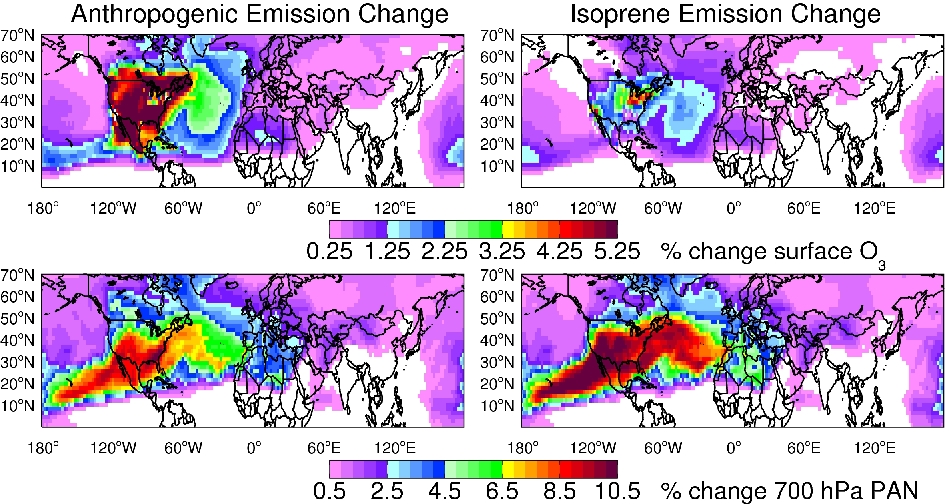February 2nd, 2011
Key Findings
- North American isoprene emissions can be as important as anthropogenic emissions in contributing to intercontinental O3 transport from North America to Europe in summer into fall.
- The large variability in model ozone responses to anthropogenic emissions across models does not appear to be tied to model differences in the baseline level of isoprene emissions or to the treatment of isoprene nitrate recycling (though they are major uncertainties in the baseline O3 budget).
- Long-term PAN measurements at high altitude sites may help to detect O3 precursor emission changes.
- Future increases in NA isoprene emissions (such as could be driven by climate or land-use change) could offset decreases in EU surface O3 resulting from controls on NA anthropogenic emissions
Changing land-use and climate may increase biogenic isoprene emissions, which could offset the benefits from North American air pollution controls for both domestic and European air quality (surface ozone). Both anthropogenic and biogenic emission changes are reflected in peroxy acetyl nitrate (PAN), which may serve as a more effective indicator of intercontinental emission changes than ozone itself.

We also examine changes in PAN at 700 hPa for two reasons: (1) this level should reside in the lower free troposphere and thus reflect the composition of air masses that are available to subside and mix into the continental boundary layer, and (2) this altitude is a region of the atmosphere that can be sampled with ground-based instruments in mountainous regions. Both NA anthropogenic and isoprene emission changes exert a larger relative influence on PAN at 700 hPa, as compared to surface O3 (compare top and bottom). This result implies that long-term PAN measurements at high altitude sites may help to detect O3 precursor emission changes.
For more information please see Fiore, Arlene M., Hiram Levy II, and D A Jaffe (2011): North American isoprene influence on intercontinental ozone pollution. Atmospheric Chemistry and Physics, 11(4), doi: 10.5194/acp-11-1697-2011.


